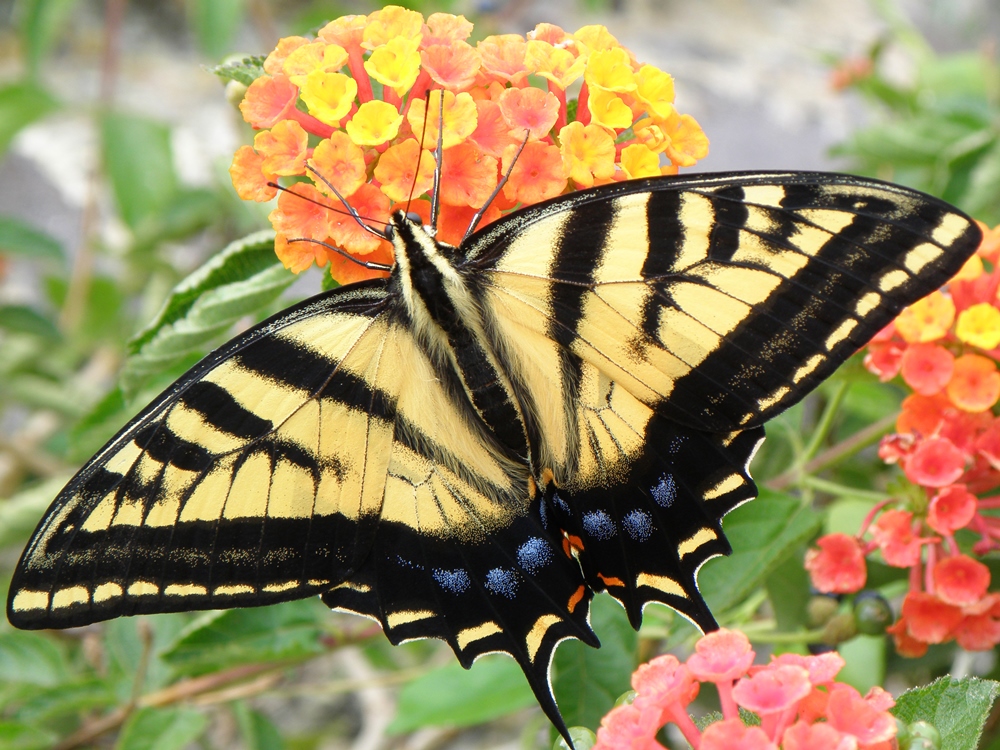
SCIENTIFIC NAME
Papilio Canadensis
DESCRIPTION
Adult wingspan is 53–90mm. Adults (butterflies) are yellow with thick black bands coming down from the top of the forewing and some black lines/veins across the hind wings. There are thick black bands along the edge of both the forewing and hind wing, with yellow spots along the forewing and yellow and orange spots on the jagged hind wing. There is a softer band of blue patches on the hind wing. Near the bottom of the hind wing is an extension that, when you look at both wings together, resemble the long, forked tails of some swallows.
Young (larvae/caterpillars), when immature, are brown and white and resemble bird droppings. Older caterpillars are large and green. Their body is fatter just behind the head and has two yellowish spots that look like eyes and a yellow band farther back, giving the impression of a much larger head, which is thought to deter predators.
RANGE
All provinces and territories, including the northernmost reaches of the Yukon, north of the Arctic Circle!
HABITAT
Open woodlands and forests, roadsides and gardens near treed areas; areas north of the treeline including stunted trees and dwarf willows.
DIET
Adults (butterflies) drink flower nectar from blooms with open or deep flowers and from mud puddles (obtaining minerals from damp ground). Young (larvae/caterpillars) feed on leaves of willow (Salix spp.), cherry (Prunus spp.), poplar (Populus spp.), ash (Fraxinus spp.) and birch (Betula spp.).
BEHAVIOUR
undefinedPRIMARY ECOSYSTEM ROLES
Pollinator (Their pollination services come into play as pollen gets on their legs and bodywhen they land and drink, helping the transfer of pollen from flower to flower.)
- 0
- 1
